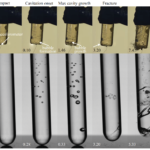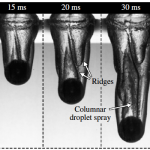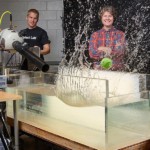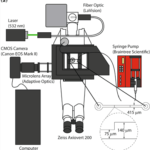
Abstract:
When a hard-boiled egg spins through a pool of milk on the kitchen counter, the milk rises up the sides of the egg and droplets are ejected. This phenomenon occurs when any partially submerged object whose radius increases upward from the fluid surface (e.g., spheres, inverted cones, and rings) spins in a liquid bath. The fluid ejects from the surface near the maximum radius in one of three ejection modes: jets, sheets, or sheet breakup. Additionally, a surprisingly large flow rate is induced by the spinning object. In this study, we used spheres to determine the effects of experimental parameters on the induced flow rate. We characterized the modes of ejection and measured the sheet breakup distance using high-speed imaging. The basis of our closed form analytical model utilizes an integral momentum boundary layer analysis both beneath the free surface and in the thin film attached to the sphere. We present criteria defining the transitions between ejection modes and the radius where liquid sheets break up in the sheet ejection regime. Criteria defining the transitions between ejection modes and the radius where liquid sheets break up in the sheet ejection regime shows good agreement with experiments.






Recent Comments